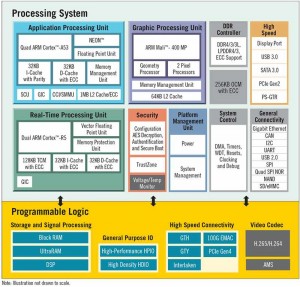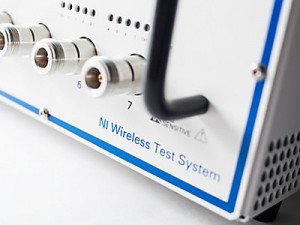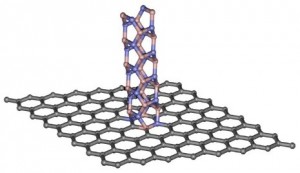 Graphene and boron nitride nanotubes can form a digital switch, according to Michigan Technological University.
Graphene and boron nitride nanotubes can form a digital switch, according to Michigan Technological University.
Respectively they are a zero band-gap conductor and wide band-gap insulator.
“When we put them together, you form a band gap mis-match that creates a potential barrier that stops electrons,”said Michigan professor Yoke Khin Yap.
The team took exfoliated graphene and grew BN tubes on it with chemical vapour deposition (see diagram): 60nm diameter hetrojunctions formed at the joins.
Tungsten scanning tunnelling microscope (STM) probes were used to contact the graphene and the tube.
When the probe was 1.23µm up the tube from the join there was no conduction (±30V bias).
At 620nm away from the join, a symmetrically-conducting junction formed – with a curve much like a diode conduction curve, but bidirectional, which was conducting significantly (0.5µA) with 30V bias in either duirection.
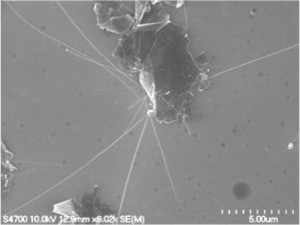 Shifting the distance to 100nm caused the junction to conduct significantly by ~12V.
Shifting the distance to 100nm caused the junction to conduct significantly by ~12V.
Attempts to turn the junction into a transistor – the under-lying oxidised silicon wafer (500nm oxide) was used as a back-gate – were unsuccessful, even at ±100V. The team proposed that highly-conductive lower layers of the multi-layer graphene shielded the junction, and that a top-gated structure might work.
Simulation by density functional theory (DFT) suggests that mismatch of the density of states (DOS) is responsible for the voltage-dependant switching behaviour, according to ‘Switching behaviors of graphene boron nitride nanotube heterojunctions‘, a paper covering the work in Nature Scientific Reports.
steve bush
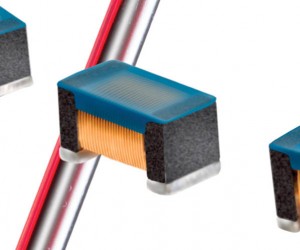 The 0402DF series of chip inductors offers higher inductance and significantly lower resistance compared with previous 0402-sized inductors, claims maker Coilcraft.
The 0402DF series of chip inductors offers higher inductance and significantly lower resistance compared with previous 0402-sized inductors, claims maker Coilcraft.
